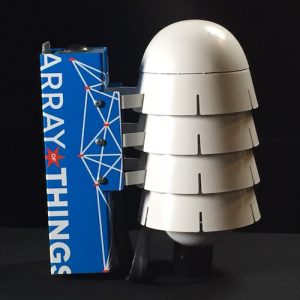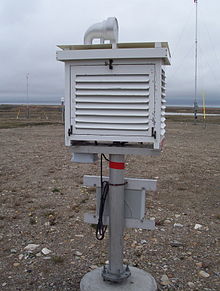Hello! My name is Kevin Mendoza Tudares, and I am a rising sophomore at Northwestern University studying Computer Science. This summer, I am working with Pete Beckman and Rajesh Sankaran on developing a process to clean and organize preexisting and incoming data from the Array of Things (AoT) nodes as well as use time series techniques on this data to quantify the correlation between direct exposure to sunlight and the resulting error in the reported environmental temperature (and humidity) by the node.
Having an up-to-date server and database is critical when working with live and time-series data, and at the moment, the research team is transitioning their database system to using PostgreSQL extended with TimescaleDB in order to efficiently manage the incoming data from the nodes as time-series data. That is why a part of what I am working on this summer is writing scripts/programs that will cleanly create mappings and upload data representing the system of nodes and sensors in the form of .csv files into their appropriate relational tables in the new database. These scripts will also transfer other preexisting node and sensor data along with large amounts of measurement data from the previous database system into the new one. This first part of my work is important for the execution of the second portion as I will be working with this same data to find correlations between the reported solar exposure and error in reported temperature.
The second task I will be working on involves knowledge of thermal radiation and how it affects the performance of outdoor temperature instruments, such as those used in climatology stations and found usually in white plastic housings or enclosures called Stevenson screens. These enclosures protect the instruments from precipitation and direct or reflected sunlight while still allowing air to circulate through them, thus allowing more accurate and undisturbed measurements from the environment around them. AoT nodes are built in a similar fashion for the same benefits, as seen in the figures below.

Figure 1: An AoT Node

Figure 2: Exterior of a Stevenson screen
Along with the benefits of protection from this design, one of the issues with this for the AoT node enclosure is the concept of solar gain, which is the increase in thermal energy, or heat, in a space or object as it absorbs solar radiation. While the node casing protects the temperature sensors from direct incident radiation, as none of it is transmitted directly through the material and most of the radiation is reflected, there is still the presence of thermal reradiation from the protective material. This is because “despite being coloured white the external surfaces may be free to absorb some short-wave radiation, and some of this may reradiate internally” into the node as long-wave radiation and onto the temperature sensors (Burton 160). This infrared radiation causing the error doesn’t need to come from the sun directly, as it could also come from the glare from glass of a nearby building or from the hood of a passing vehicle, but this error is most often to occur in the day time when the sun is out and shining directly on these nodes. Another issue that goes in hand with the thermal reradiation would be the size of these nodes, as previous research has found that an overheating of air temperature inside smaller sized Stevenson screens was detected more frequently in comparison to much larger Stevenson screens, and these findings could be applied to the small-scale nodes mounted on poles (Buisan et al. 4415). Excessive solar gain can lead to overheating within a space, and with less space, this form of passive heating is much more effective as the heat cannot disperse. Finally, one last issue with the internal temperature of the nodes is the lack of active ventilation. Studies have found that Stevenson screens that are non-aspirated (no ducts) reported significantly warmer internal temperatures than ones with aspiration ducts under low wind conditions (Hoover and Yao 2699). Without aspiration ducts, which all nodes lack, the cooling for these nodes to maintain them at ambient temperature is limited to only wind conditions that will circulate air through the node.
Thus, with the knowledge of potential issues with the nodes that could result in errors in ambient temperature data, my task is to find, understand, and quantify the described trend. This process will involve the time-series data I previously cleaned and uploaded, querying the detected visible and infrared light measurement data from a node at times where the calculated temperature error reaches a certain magnitude, and using these associated values to create a model. This model can then be applied to estimate a more accurate measurement of the ambient temperature around the node by accounting for this error at other times given the light measurements.
My work on this project is important because working with accurate data and readings is essential for all other data analysis and machine learning tasks that must be done by the team to identify and predict phenomena in our environment. For this to be done, we must have faith in the data and any trends we see, and I am contributing to help understand these trends and account for them. Special thanks to Pete Beckman, Rajesh Sankaran, and Jennifer Dunn for mentoring me this summer.
References:
Buisan, Samuel T., et al. “Impact of Two Different Sized Stevenson Screens on Air Temperature Measurements.” International Journal of Climatology, vol. 35, no. 14, 2015, pp. 4408–4416., doi:10.1002/joc.4287.
Burton, Bernard. “Stevenson Screen Temperatures – an Investigation.” Weather, vol. 69, no. 6, 27 June 2014, pp. 156–160., doi:10.1002/wea.2166.
Hoover, J., and L. Yao. “Aspirated and Non-Aspirated Automatic Weather Station Stevenson Screen Intercomparison.” International Journal of Climatology, vol. 38, no. 6, 9 Mar. 2018, pp. 2686–2700., doi:10.1002/joc.5453.